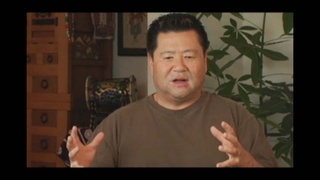Interviews
Differences in taiko style (Japanese)
(Japanese) When I heard about the Kinnara Taiko the following year, I hurried over there and stayed with them for about three months. But I had a hard time understanding their way of playing. They were so different from my style. Even Johnny Mori said to me, “This guy doesn’t know anything.” Well, I came to think of it. He might be right. Although I asked them to let me play in the back, I just didn’t understand their music. Even then I could not feel anything in their playing that would touch my heart. In those days, Kinnara did not have a teacher. When they heard something they liked, for instance, a part of a piece in a recorded playing or a movie like Muhomatsu no Issho, they would imitate any rhythm they hear and try to incorporate them into their playing. Initially, you could recognize where the music (rhythm) came from but gradually they would evolve into something different. They played the taiko in that way at that time.
Date: April 1, 2005
Location: California, US
Interviewer: Ann Kaneko
Contributed by: Watase Media Arts Center, Japanese American National Museum.




